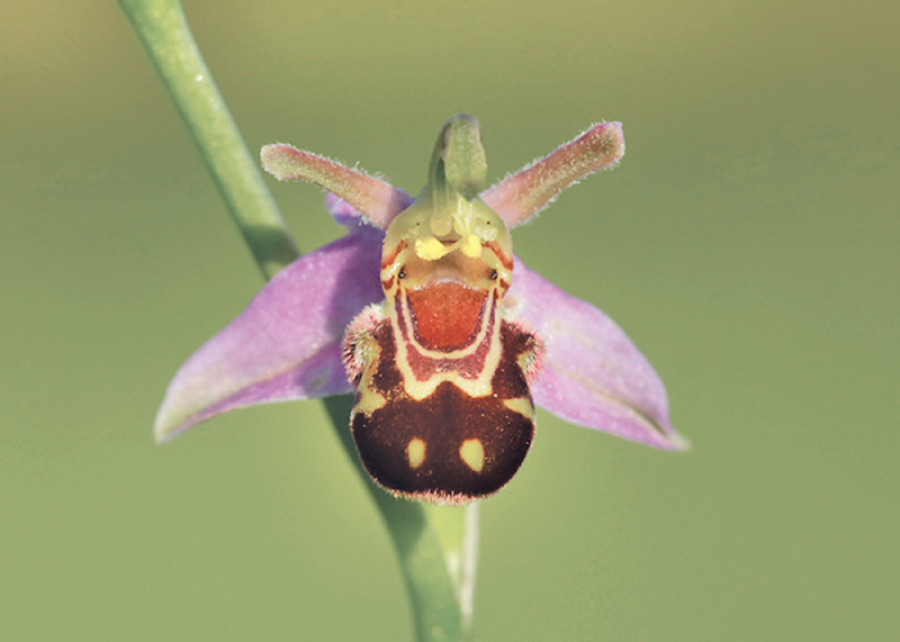Opinion
Born to be wild
Creative coupling is the order of the day
Maneka Sanjay Gandhi
There is only one purpose to all life—to reproduce. This cosmic order has been given to every cell in every being. It shapes the way we look, think and behave. In order to follow this order, the universe has designed a variety of ways, while reproduction using a male and female sperm and egg seems to be the norm. But there are organisms that multiply themselves by splitting; one species that has seven sexes (Tetrahymena) and can multiply with any; species where females or egg layers don’t need males to give birth; species like bacteria where DNA is simply sent across a tube to another identical being. Creative coupling is the order of the day.
In some deep-sea angler fish species, like the needlebeard seadevil, the tiny male bites into the female, who is often 10 times his size, and soon begins to disintegrate, melting and fusing into her until he’s nothing but testes and a tail sticking out of her side—a sperm supply she’ll use to fertilise her eggs. How do the sperm get to the eggs? Males release sperm and females release eggs, which are then fertilised in the water.
Male squid use a tentacle to stick sperm packets, called spermatophores, on to the heads of females. The sperms burrow into the skin. After that, their route is a mystery.
According to entomologists at the University of Arizona, dragonfly sperm scrapers are a unique tool in the reproduction game. Before mating, male dragonflies use one penis to scrape the female’s organ and remove the sperm of any prior mating before delivering their own. They then use their other set of genitals and move sperm from the testes into the penis and then mate with her.
All natural
Some other animals get to be both sexes but not at the same time. The clownfish is born male but it can become female. Clownfish live in groups where only one couple gets to have sex. If the female dies, one of the larger males transforms into a female and the cycle continues. Similarly, some frog species will have members of a population change sex, either from male to female or female to male, in order to maintain the proper proportion of each gender to ensure the continuation of the group.
The New Mexico whiptail is a female lizard of a species that has no males. They don’t require fertilisation for their eggs to develop and hatch into new female lizards. However, they undertake mating rituals with each other, one taking a ‘male’ role, and this has hormonal effects on the other, causing her to lay more eggs. A lizard will tend to take on the male role soon after she’s laid her own eggs.
Hermaphrodite land snails have both male and female sex organs. Once they’ve selected a likely partner, they flex a muscular sac inside their bodies and eject a dart into the other snail’s head, which delivers mucus that readies the snail to receive a sperm packet. Some species jab their mates over and over with their dart, with one stabbing its mate more than 3,000 times. These darts pierce its head completely even hitting the eyestalks.
Serious commitment
Male orb-web spiders know they will be eaten by the female during sex. So they have developed an unusual strategy to save themselves. Once they’ve penetrated the female, they detach their genitalia—structures called palps—and scuttle away, out of the female’s reach. The palp continues to deliver sperm until the female manages to pull it out, which can take up to seven hours.
Most flowers have a relationship with bees and butterflies that helps reproduction. The insects get nectar and in return carry pollen from one flower to the next. Once this happens, the receiving flower starts the process of making the seeds that will grow into new flowers.
Certain species of orchids don’t find this strategy good enough. They don’t want the bee to simply go to the next flower, as this causes inbreeding. In the Mediterranean, a bee orchid, Ophrysapifera, looks exactly like the rear of a female bee, fur and all, with its head buried in a blue-petalled flower. Not only that, Ophrys mimics the scent of the female bee. Male bees fall to mating so vigorously with the flowers that they dislodge pollen packs pre-loaded with a special adhesive that sticks to their backs. After some frantic efforts at achieving bliss, the bee realises he has been fooled and flies quite far collecting his wits. By the time he forgets and falls for the trick again; and he has chosen an Ophrys which is far away and so the strategy of the flower, in finding new flowers to pollinate, is successful.
An Australian marsupial, Antichenus, resembles a mouse with the bristly fur of a hedgehog. During the annual mating season, males copulate with many partners one after the other, for up to 14 hours at a stretch. Days later this marathon sex causes the males to develop sores, lose their hair, go blind and finally die of exhaustion.
Male bedbugs use their needle-like penises to puncture the females’ exoskeletons wherever they can. Sperm is deposited into the wound, where it travels through her body fluid to the ovaries.
Male bees, after inseminating the queen, die because their testicles explode inside her. This is an evolutionary necessity: with the penis inside the female, which seals off any chance of another male getting a mating with her. That is a serious commitment to the future.
Why look at animals for weird, wonderful and scary reproduction. Our own mythology is full of strange examples.
To join the animal welfare movement contact [email protected], www.peopleforanimalsindia.org




 11.12°C Kathmandu
11.12°C Kathmandu










